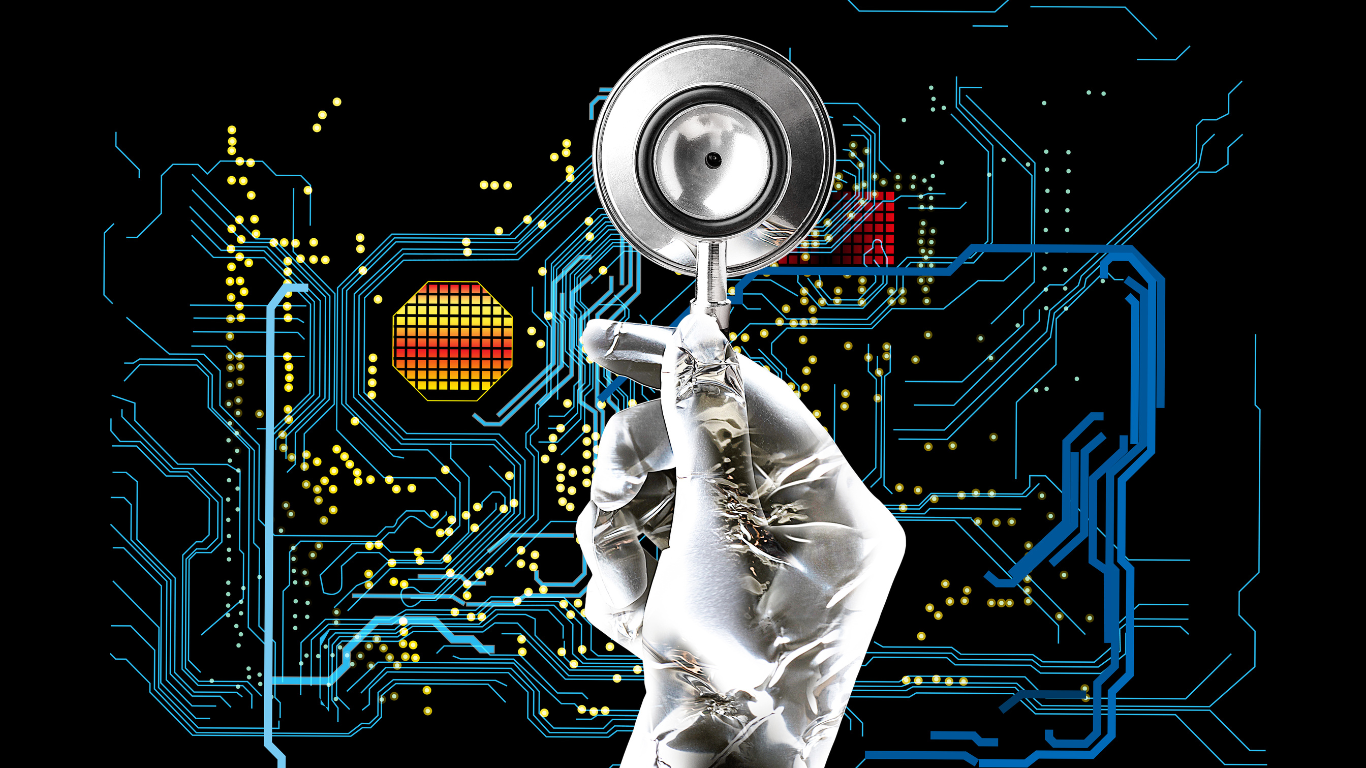Business Growth
Technological Advancements in Surveillance Tools
Technological progress has profoundly transformed the realm of surveillance equipment, delivering unparalleled functionalities for safety and supervision in this digital era. Integrating artificial intelligence (AI) and improving image recognition has not only boosted surveillance efficiency but also sparked crucial debates concerning privacy and ethical implications.
By Richelle Mayor
November 29, 2023

Technological progress has profoundly transformed the realm of surveillance equipment, delivering unparalleled functionalities for safety and supervision in this digital era. Integrating artificial intelligence (AI) and improving image recognition has not only boosted surveillance efficiency but also sparked crucial debates concerning privacy and ethical implications.
The article explores the remarkable progress in surveillance technology, shedding light on the impact and factors linked with these advances.
Artificial Intelligence (AI) Integration
The amalgamation of Artificial intelligence (AI) into surveillance tools marks a groundbreaking evolution in security, fundamentally altering how threat detection and response are approached. The integration of AI algorithms has propelled intelligent video analytics into a new era, significantly enhancing their functionality at an unprecedented scale.
The integration of AI has ushered in a significant advancement in autonomously identifying and examining complex patterns within extensive video data flows. Unlike conventional surveillance approaches, which predominantly depend on manual observation, AI-driven systems can swiftly navigate through massive datasets in real-time, detecting subtle intricacies that human observation might miss.
This heightened level of automation not only expedites the analysis but also reduces the potential for oversights, thereby enhancing the thoroughness and dependability of surveillance.
Integration of AI to Surveillance Systems
The incorporation of AI into surveillance systems represents a notable leap forward in their functionality, empowering them to independently analyze vast amounts of video data in live scenarios. Consequently, this indicates that the technology can rapidly scrutinize and comprehend extensive video feeds, recognizing complex patterns and subtle deviations that might escape human perception.
This automated approach not only expedites the analysis but also amplifies the overall surveillance effectiveness by ensuring a comprehensive scrutiny of the visual data.
Proactive Threat Identification
AI incorporation enhances surveillance systems by granting them proactive threat identification capabilities. Through the utilization of machine learning algorithms, these systems have the capacity to comprehend standard patterns based on historical data.
When anomalies are observed in these patterns, the system can preemptively recognize potential security threats before they unfold. This not only diminishes response times but also fosters a more preventive and forward-thinking security strategy.
Reduced False Alarms
AI integration offers a remarkable advantage through its ability to substantially decrease false alarms. Its advanced algorithms empower the system to differentiate credible security threats from harmless occurrences, thereby reducing the likelihood of unnecessary interruptions.
This enhances not only the effectiveness of security personnel but also ensures more efficient resource allocation, directing attention toward genuine security issues.
Nuanced Incident Understanding
In the realm of AI-driven analytics, the capability surpasses mere detection as it offers an intricate comprehension of the identified incidents. By classifying events according to their levels of severity, the technology empowers security personnel to prioritize alerts and distribute resources prudently. This detailed grasp of incidents facilitates a precise and effective approach to addressing security-related occurrences.
Predictive Analysis:
AI-integrated surveillance has revolutionized security anticipation by employing predictive analysis. Leveraging historical data, AI algorithms predict potential security threats before they occur, offering preemptive security. This advanced approach enables organizations to proactively address emerging threats and vulnerabilities.
Efficient Decision-Making
Utilizing AI leads to improved decision-making in security operations. The fast analysis and practical guidance derived from AI empower security teams to promptly address incidents, enhancing the agility and efficiency of responses to evolving security threats.
Dynamic Technology Evolution
Incorporating AI into surveillance operations guarantees that technology continuously leads the way in security progress. The system’s capability to adjust to novel and evolving threats establishes it as a flexible and robust defense mechanism. This evolving technological landscape not only guarantees the system’s current effectiveness but also equips it to tackle forthcoming security challenges with readiness and efficiency.
Amidst the dynamic threat environment, AI integration serves as a fundamental element in reinforcing our capacity to pinpoint, evaluate, and swiftly address security concerns with remarkable accuracy and swiftness. By combining sophisticated algorithms with surveillance technology, efficiency is enhanced through automated detection and analysis, resulting in heightened overall security effectiveness.
Advanced Image Recognition
Remarkable advancements have been made in image recognition technology. This has encouraged surveillance tools to go beyond mere identification of individuals and delve into analyzing their behavior.
The accuracy and speed of facial recognition algorithms have greatly improved, bolstering security measures in various settings such as public spaces, airports, and commercial establishments. Despite these achievements, the increased integration of facial recognition has ignited discussions surrounding privacy issues and ethical dilemmas. Here’s a comprehensive walkthrough of what advanced image recognition is providing to the security industry:
- Improving Precision: A significant progress in image recognition technology lies in the enhanced precision of facial recognition algorithms. These systems are now capable of more consistently pinpointing individuals, even under difficult circumstances like dim lighting or concealed faces, bolstering security measures.
- Behavioral Analysis: Beyond just recognizing individuals, contemporary image recognition systems possess the capability to analyze individual behavior. This encompasses monitoring gestures and movements, leading to a more thorough comprehension of actions within a specific area. Such capabilities have demonstrated significant value across a wide range of applications, spanning from security surveillance to retail analytics.
- Enhanced Security Measures: The incorporation of cutting-edge image recognition has substantially fortified security protocols in various settings, including public areas, airports, and businesses. This technology serves as a preemptive mechanism to detect potential risks, thereby amplifying general safety and diminishing reaction intervals during urgent scenarios.
- Privacy Concerns: Amidst the benefits it offers, the extensive application of facial recognition technology has sparked discussions on privacy. The capability to monitor people’s actions and whereabouts has prompted inquiries into the equilibrium between safety and individual privacy. Achieving this equilibrium poses a pivotal hurdle for policymakers and tech innovators.
- Ethical Considerations: The ongoing conversation around advanced image recognition techniques extensively addresses ethical considerations. These encompass a range of critical concerns, including consent, data ownership, and the potential for misuse of collected information. Policymakers and industry stakeholders are actively collaborating to develop guidelines that promote the responsible and ethical use of these technologies.
In essence, the progression of image recognition technology has not solely heightened the precision of facial recognition but has also broadened its scope to encompass behavioral analysis.
Although these strides have bolstered security measures, they have also sparked debates regarding privacy apprehensions and ethical deliberations, which are pivotal for the conscientious advancement and utilization of these technologies.
Drone Surveillance
The prevalence of surveillance drones has risen significantly. Equipped with high-resolution cameras and AI functionalities, drones offer a flexible and dynamic solution for monitoring extensive areas. Their utility proves especially crucial in border control, disaster response, and event security.
However, the widespread use of drone surveillance has sparked debates regarding the equilibrium between security requirements and privacy considerations. Here’s how the drone is changing the security landscape:
- Versatile Monitoring: The fusion of cutting-edge drones with high-definition cameras and AI features has marked the dawn of a revolutionary phase in surveillance. Drones present a flexible and adaptable method for overseeing extensive areas, delivering a perspective that conventional surveillance techniques find challenging to match. Their adaptability renders them indispensable across diverse scenarios, encompassing border control, disaster management, and event security.
- Border Control: In the domain of border security, drones with cutting-edge surveillance tech are indispensable. They adeptly navigate expansive and difficult terrains, delivering immediate monitoring and detection abilities. This not only heightens the efficiency of border control but also enables rapid reactions to possible threats or breaches.
- Disaster Response: In disaster response situations, the utilization of drone surveillance has proven to be immensely valuable. The rapid deployment of drones to evaluate damage, pinpoint survivors, and strategize rescue missions marks a revolutionary advance. The live data furnished by drones amplifies the operational productivity and impact of disaster response units, potentially preserving lives in pivotal circumstances.
- Event Security: Drone surveillance significantly contributes to event security for gatherings of all sizes, ranging from public events to exclusive functions. Through advanced aerial monitoring, drones effectively oversee crowds, spot potential security threats, and offer valuable situational awareness from distinct viewpoints. This proactive tactic in event security substantially boosts safety measures, ensuring comprehensive protection for all attendees.
- Privacy Concerns: The increased use of drone surveillance technology has sparked debates regarding the intricate equilibrium between security requirements and privacy entitlements. Drones’ ability to record comprehensive visuals has prompted worries about unjustified incursions into the personal spheres of individuals. Finding a middle ground that guarantees public safety while preserving individual privacy poses an ongoing challenge for policymakers and technologists alike.
The emergence of drone surveillance represents a significant change in monitoring and security methods. This advancement offers substantial benefits for border control, disaster management, and event security. However, it also requires a thoughtful examination of the ethical concerns related to privacy. The ongoing discussion highlights the critical need for setting forth regulations to oversee the ethical application of drone surveillance in our swiftly advancing technological environment.
Internet of Things (IoT) Integration
The incorporation of the Internet of Things (IoT) has surfaced as a revolutionary influence. This fusion paves the way for a fresh epoch where monitoring tools interact effortlessly and exchange data, nurturing a linked environment that amplifies the capabilities of security systems.
As surveillance adjusts to the digital era, the interlinking facilitated by IoT offers incomparable advantages, permitting instant monitoring, advanced data scrutiny, and remote accessibility. Nevertheless, this technological advancement is not devoid of challenges. The very interdependence that propels these systems to new peaks also triggers apprehensions about potential weaknesses and the necessity for strong cybersecurity measures.
Let’s plunge into the complexities of IoT incorporation in surveillance, analyzing its merits and the crucial considerations it necessitates.
Internet of Things (IoT) Integration in Surveillance
- Seamless Communication: The emergence of surveillance tools via IoT represents a significant change in communication approaches. Surveillance cameras, sensors, and monitoring devices can now seamlessly interact, fostering a cohesive system that enables smooth data flow and comprehensive monitoring of the environment.
- Real-time Monitoring: Integrating IoT into surveillance offers a key benefit: real-time monitoring. The data from multiple devices can be swiftly transmitted and analyzed, providing security personnel with immediate insights. This capability facilitates agile and well-informed decision-making in rapidly evolving and time-critical scenarios.
- Data Analysis: Unraveling the potential of interconnected surveillance devices, the copious data they generate fuels advanced data analysis. Machine learning algorithms adeptly navigate through expansive datasets, uncovering patterns, anomalies, and potential threats. This analytical process not only amplifies the effectiveness of surveillance systems but also fosters a more vigilant and astute security approach.
- Remote Access: Integration of IoT enables remote access to surveillance systems, empowering security personnel to oversee and control operations from any location with internet connectivity. This capability is especially advantageous for extensive facilities, essential infrastructure, and widely scattered sites, enhancing operational flexibility and productivity.
- Cybersecurity Concerns: The interconnected nature of IoT devices in surveillance systems brings forth considerable cybersecurity concerns despite their numerous advantages. There are potential vulnerabilities within these interconnected networks that could be targeted by malicious entities, ultimately putting the integrity and confidentiality of surveillance data at risk.
To address these risks, it is crucial to implement robust cybersecurity measures such as encryption, authentication, and regular software updates. These measures are essential for safeguarding the interconnected surveillance ecosystem and maintaining trustworthiness.
The incorporation of IoT into surveillance technology signifies a significant advancement, providing unparalleled functionalities in communication, real-time monitoring, data analysis, and remote access. Nevertheless, reaping these advantages necessitates a simultaneous dedication to tackling cybersecurity concerns.
As the convergence of IoT and surveillance continues to mold the landscape of security in the future, it is crucial to adopt a watchful and forward-thinking stance to fully exploit the capabilities of this interconnected framework.
Biometric Surveillance
Biometric surveillance has progressed beyond fingerprint recognition to encompass techniques like iris scanning and gait analysis. These updates improve the precision and dependability in pinpointing individuals, thereby bolstering security measures. However, the implementation of biometric surveillance tools demands thoughtful reflection on privacy concerns and the ethical treatment of personal information.
The landscape of biometric surveillance has witnessed a remarkable evolution, transcending its conventional boundaries confined to fingerprint identification. Today’s biometric systems integrate state-of-the-art techniques such as iris scanning and gait analysis, elevating the precision and dependability in individual identification.
While these strides bolster security measures substantially, the incorporation of biometric surveillance tools demands a careful exploration of the privacy ramifications and ethical aspects associated with the utilization of personal information.
Beyond Fingerprint Recognition
Biometric surveillance has expanded its scope to include a variety of identification technologies. Iris scanning, capable of capturing distinct patterns in the iris, offers enhanced precision. Moreover, gait analysis, which evaluates an individual’s walking pattern, enriches the array of biometric surveillance tools, enabling diverse identification methods.
The infusion of cutting-edge biometric technologies greatly amplifies the precision and dependability in recognizing individuals. Take for example iris scanning, which is widely acknowledged for its unique characteristics, rendering it arduous to counterfeit or duplicate. Conversely, gait analysis introduces a behavioral facet to identification, thereby fortifying the overall resilience of biometric surveillance systems.
Enhanced Accuracy and Reliability
The use of biometric surveillance, incorporating various identification methods, significantly aids in accurately and unequivocally identifying individuals. This aspect holds immense significance in high-security settings, such as government establishments, airports, and financial institutions, where precision is of utmost importance.
Enhanced biometric surveillance tools play a crucial role in thwarting unauthorized access to sensitive areas or information. Iris scanning and gait analysis bolster security measures, surpassing conventional methods, hence diminishing the risk of identity theft or fraudulent breaches.
The progress of biometric surveillance technologies has introduced an era of precise and sophisticated identification methods. These advances substantially enhance security measures, yet the responsible use of biometric surveillance demands keen regard for privacy implications and ethical considerations. Striking a balance between security imperatives and the preservation of individual rights presents a central challenge as biometric surveillance continues to shape modern security systems.
Conclusion
The evolution of surveillance tools has significantly reshaped security and monitoring. Despite the remarkable benefits they bring to bolster public safety, ethical and privacy concerns emerge regarding their responsible use. As we observe the ongoing development of surveillance technologies, it’s crucial to adopt a balanced approach that prioritizes both security needs and individual liberties to fully leverage these advancements.
Related Posts
Startup
So exactly what is a private security contractor? A private security contractor is a company or individual that typically provides protective services to individuals, businesses, the federal government, military, or other organizations or properties. Private security contractors sometimes operate in high risk areas to protect clients from crime or kidnapping. But PSCs more often work […]
By David Kerolles
June 11, 2024
Startup
As long as there has been war, there has been a history of mercenaries- soldiers for hire that are paid to fight for a foreign army. Mercenary history is filled with stories of freelance warriors that impacted kingdoms and countries.\ Some historical mercenaries include: So exactly what is a mercenary soldier? The dictionary defines them […]
By Catherine Shannon
June 21, 2024
Startup
The job of a security guard can be described in many ways- as crucial for safety, providing proactive security, being a first line of defense, offering assistive customer service, inspiring public confidence, and maintaining law and order for clients. But TRAINED RESPONSE TO EMERGENCIES is what sets security guards apart. Using the correct emergency response […]
By David Kerolles
July 1, 2024






